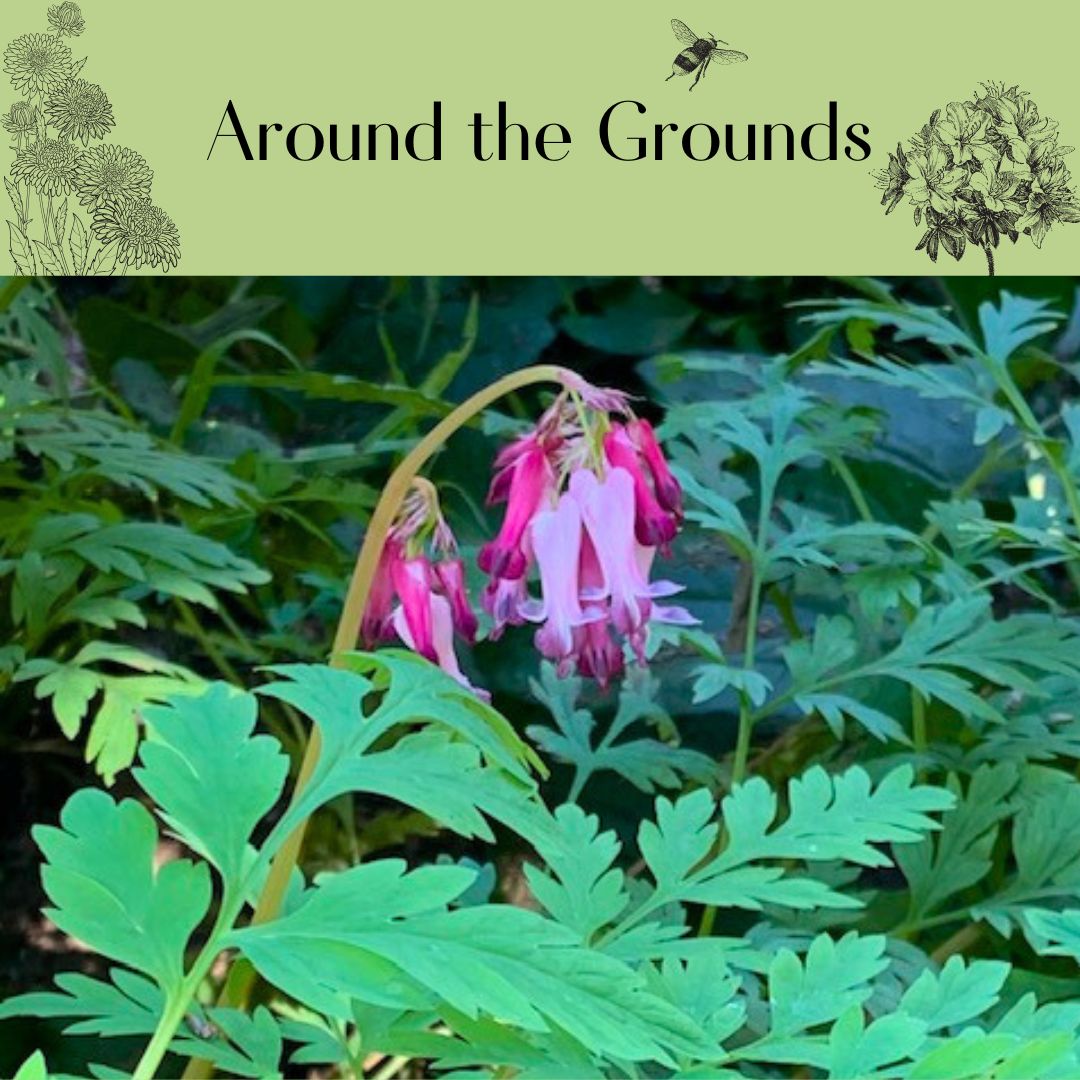We have a new love at the Nature Center.
Dicentra eximia, a native plant commonly called Fringed Bleeding Heart, started blooming here in May and continued blooming right through Halloween! It has lacy, soft green foliage that stays fresh from early spring through pumpkin time. Its flowers are little red and pink hearts with a “droplet” at the tip. Bees love them, and now, so do we.
We planted Fringed Bleeding Heart two years ago in front of the Manor House, mostly to fill in until our new shrubs got big enough to occupy the space. The soil there is not rich at all, and the building faces west. Though the overhanging eves protect the flower bed from full sun at mid-day, it is definitely not a shady area. You could think this was a questionable planting decision, since most sources say that Dicentra eximia needs rich, moist, fertile soil, and part or full shade.
We are starting to suspect that this advice comes from gardeners more familiar with the non-native bleeding heart (Laprocapnos or Dicentra spectabilis), an old garden favorite that originated in Asia. That plant definitely wants rich soil, steady moisture, and shade. It has lovely flowers, but it also goes dormant after blooming and disappears completely by late spring.
Fringed Bleeding Heart, on the other hand, originated in the Appalachian Mountains where the soil is often rocky and dries out between rainfalls. Though it can be found on shady forest floors where the soil is rich and moist, it also grows on rocky ledges with thin soil and more sun. We are starting to think this plant is tougher than most gardeners believe.
We are testing that theory by including a big patch of Dicentra eximia in the new Pollinator Garden we planted last June. Most of the other plants in that garden are tough, sun-loving, drought-tolerant perennials and grasses. But right there, in the slim shadow of a small Redbud tree, we included Fringed Bleeding Heart. The soil is poor and dry, for the most part – exactly what the other pollinator-friendly plants prefer. The Fringed Bleeding Heart gets a bit of shade from the tree, but is otherwise exposed.
And this is how it’s done so far:
A native plant that literally blooms its little hearts out for you all season long?
Oh yes, we’re definitely in love!
This blog is authored weekly by Cathy Ludden, local expert and advocate for native plants and Board Member, Greenburgh Nature Center. Follow Cathy on Instagram for more photos and gardening tips.

